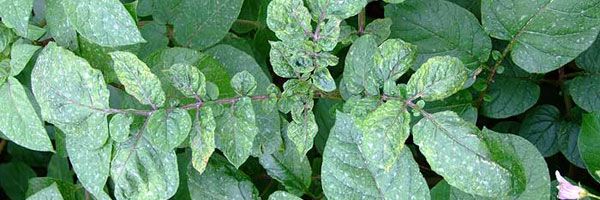
Herbicide phytotoxicity
- Possible causes
Potato crops can suffer herbicide injuries from different causes:
Seed tubers
The seed potato plants may have been accidentally contaminated during the previous year’s treatment with hormones or other herbicides (clopyralid, glyphosate, etc.) or with a sprouting inhibitor applied to the growing crops (maleic hydrazide). Another possibility is an accidental contamination of seed tubers in storage by a sprouting inhibitor (chlorpropham (CIPC)).
Soil
The soil may contain residues of the herbicide used on the previous crop, e.g. a hormone (clopyralid) overdose causing post-emergence plant deformation. This phenomenon can be observed either over the entire field or in patches (e.g. in the case of spray overlapping).
Similarly, an accumulation of these products in crop residues or in organic soil amendments (manure) may cause the same phenomenon.
Crop
- A growing crop may accidentally receive a phytotoxic product due to the application of a non-selective chemical treatment; e.g. a mistakenly used pesticide or a sprayer that has not been properly rinsed.
- The crop may receive treatment drifts from an adjacent field. In that event, the edge may be more affected than the rest of the plot (figure 1).
- A treatment overdose may induce phytotoxicity: the overdose may be due to cross-movement of spray booms or faulty treatment.
Phytotoxicity may also be due to major leaching of the product after heavy rainfall. This is particularly the case in certain soils or with a susceptible potato cultivar.
- Significance
The extend of the damage is not necessarily related to the spectacular appearance of the symptoms. The consequences for the yield of herbicide phytotoxicity are better assessed by the time and duration of the symptoms rather than by their intensity.





